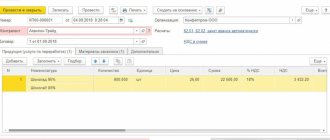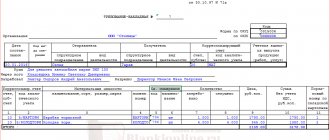IMPORTANT!
In connection with the situation with COVID-19 and the publication of Presidential Decree No. 206 of March 25, 2020 “On declaring non-working days in the Russian Federation,” the employer is obliged to provide employees with paid days off. If it is possible to switch to remote work and the employee does not mind, then an agreement must be concluded. If there is no opportunity to work remotely, and the employer forces you to write an application for leave at his own expense, he is breaking the law, the employee has the right to complain to the State Labor Inspectorate.
Some businesses or services, such as lifeguards, operate 24 hours a day, seven days a week. This approach is objectively necessary and socially significant. For commercial enterprises, this option of using the working time of their employees is also sometimes justified. For example, the property of an enterprise requires 24-hour security.
What is a shift schedule
IMPORTANT!
If your organization is operating during the quarantine period and employees are actually present at their places, then there is no need to make changes to the schedule. If the organization is not a continuous cycle enterprise or serving the population, then employees must stay at home in accordance with the presidential decree. The period of non-working days is subject to payment. In this case, the shift schedule does not need to be changed, the work is simply not performed, and the working time sheet will have to be filled out after the fact. Until now, HR specialists have not reached a consensus on what code to put on the report card. Some put code B (day off), some put code I (appearance). According to the editors, enterprises should develop and approve a separate code for this case, for example OND, so that there is no confusion in the future.
A standard daily work schedule for the entire team is not always beneficial for both the employer and the employees themselves. To ensure continuity of the production process, optimize the use of equipment and obtain maximum production volume, shift work is required in some cases. Typically, two-, three-, or four-shift schedules are established. For each shift, strict time frames are determined.
Work schedule: what is it?
Labor legislation has imposed on the employer the obligation to keep track of the time actually worked by each subordinate of the organization. In this regard, responsible persons develop a special schedule called a schedule.
A work schedule is a document created to streamline the work process in an organization.
The staff work schedule will depend on the working hours introduced by management.
Let's take a closer look at each of the modes.
Table: features of working hours
| Mode name | Characteristic features of the regime |
| Normalized | The basis is 40 hours of work per week. A citizen can work:
This is the most popular operating mode. |
| Irregular | In this case, the citizen works outside the established norm. |
| Flexible working hours | A flexible work schedule is suitable for those who want to independently determine the start and end time of their day. |
| Shift work | Introduced for the following purposes:
|
| Summarized working time tracking | Used if the employer cannot provide daily or weekly work hours. |
| Dividing the working day into parts | This is motivated if labor is distributed unevenly throughout the day. |
| Shift method | Used when an employee must work at a distance from their main place of residence. |
Using the schedule, the following tasks are performed:
- the working time of subordinates is approved;
- the employee’s remuneration for performing work duties is calculated;
- the insurance length of the employed person is determined;
- overtime of a subordinate is identified and additional payments for work above the norm are calculated.
One of the goals of developing a work schedule is to identify employee overtime
Schedules are developed by personnel department employees or department heads, whose responsibilities include planning the activities of subordinates and keeping records of the time they work.
When to use
Most often, shift work mode is used when equipment downtime causes serious damage to the enterprise. If the work requires attentiveness, regular rotation of groups of workers is essential. This allows us to maintain quality at a high level, reduces the risk of industrial injuries and increases production volumes.
Shift work is also common in institutions providing emergency assistance: doctors, emergency workers, gas and fire services, police officers. At the same time, it is quite common, for example, for guards to have a shift work schedule.
Storage Procedure
“The list of standard management archival documentation generated in the course of the activities of government agencies, local governments and organizations, indicating storage periods” is a regulation governing the procedure for storing the document in question. This list was approved in two thousand and ten by the Ministry of Culture of the Russian Federation.
According to regulations, the type of documents in question must be stored in the state archive for five years. In the case where the company’s activities are closely interconnected with a harmful production process, the shelf life is extended to five years. Many employers transfer work schedules to the state archive after one year from the date of their commissioning. Storing such documentation on the territory of the enterprise allows them to be used to resolve disputes between employees and the company administration.
Number of shifts and workers in them
If we talk about the time period of one shift, then the range of options ranges from 3 to 12 hours in one day. The number of shifts is set by the management of the enterprise and is determined by the specifics of the production process and the degree of workload. The shift schedule (can be found online, for example, in our article “Working time schedule”) is applied year-round or seasonally - during periods of increased demand for certain products. Social services operate in this mode all year round.
The number of workers on each shift is not limited. When drawing up the next shift schedule for 2020, the employer is obliged to take into account the opinion of the trade union and formalize the document as an annex to the collective agreement.
The updated work schedule (Article 103 of the Labor Code of the Russian Federation) is brought to the attention of each employee at least a month before implementation. The Labor Code categorically prohibits scheduling two or more shifts in a row for the same group of workers.
What is a shift work schedule?
Important! Article 103 of the Labor Code of the Russian Federation states in black and white that a person cannot work two shifts in a row!
The same article of the Labor Code of the Russian Federation explains that a company can have a maximum of four shifts. Let us explain why shifts are needed in principle:
- To prevent employees from overworking.
- To ensure that the organization's equipment is used with maximum efficiency.
- To increase the output of goods.
When workers, or groups of workers, work in shifts, the firm can operate without stopping. But the schedule according to which people change must be approved in the form of a document. Moreover, the entire staff designated in this document must be familiarized with the schedule even before it comes into force. Moreover, in terms of time - at least 1 month.
Note: according to the labor code, the director of the company does not simply draw up a shift schedule and sign it. He is obliged to familiarize the workers with the document and ask their opinion (or the opinion of the trade union committee).
Schedule generation process
The number of shifts, employees in them and the transition of employees from one shift to another are regulated by the shift schedule. When working at night, the shift is reduced by one hour. Some employees are allowed to work on night shifts only with their written consent. These categories include:
- young mothers whose children have not reached the age of three;
- disabled people or their parents (until they reach the age of majority);
- caregivers;
- single mothers or fathers and guardians of children under five years of age.
Watchmen's shift schedule, sample for 3 people
Using this sample, it is easy to draw up a shift schedule for guards (sample) for 4 people. The employer is obliged to develop work schedules for guards in such a way that the number of working hours per year does not exceed the established norm (1981 hours).
How to register a transition to a shift schedule
In order to switch to shift work, the employer must:
- issue an order to introduce a shift work schedule;
- reflect the condition on the introduction of a shift regime in the Labor Regulations or the collective agreement (Part 1 of Article 100 of the Labor Code of the Russian Federation);
- draw up a shift schedule (Part 2 of Article 103 of the Labor Code of the Russian Federation);
- specify the condition for introducing a shift work schedule in the employment contract with the employee (part 1 of article 100, paragraph 6 of part 2 of article 57 of the Labor Code of the Russian Federation).
Issue an order to switch to shift work in any form. In it, indicate the positions for which shift work is established, the timing and procedure for introducing shift work.
When reflecting the conditions for shift work in the Labor Regulations or in a collective agreement, indicate (Part 1 of Article 100 of the Labor Code of the Russian Federation):
- length of the working week;
- duration of daily shift, including part-time shift;
- start and end times of work;
- time of breaks from work;
- number of shifts per day;
- alternating working and non-working days.
The condition on shift work must be specified in the employment contract with the employee (part 1 of article 100, paragraph 6 of part 2 of article 57 of the Labor Code of the Russian Federation). If the employment contract was concluded before the introduction of the shift regime, then amend it in the manner prescribed for changing the employment contract for reasons related to a change in organizational or technological working conditions (Articles 72, 74 of the Labor Code of the Russian Federation).
Example. In connection with the store's transition to a new operating mode, the head of the organization issued an order to introduce a shift work schedule. The head of the HR department familiarized employees with the changes, salesman K.I. Semenova agreed to work on a shift schedule. In connection with the change in the work schedule, an additional agreement was concluded with the employee to the employment contract. Semenov K.I. familiarized with the shift schedule against signature a month before its introduction.
Two-by-two schedule with a 12-hour workday
When drawing up such a document, it is important to ensure that in the case of a summarized accounting of the working period there are no violations and it fully satisfies the requirements of the shift schedule (Article 103 of the Labor Code of the Russian Federation).
Let's give an example.
When working 12 hours a day, an employee works 30 / 2 × 12 = 180 hours in a month. Consequently, there is an overtime of 20 hours and it is necessary to comply with the number of days off during the week and month. The total number of working hours per month should not exceed 167. Another feature of the 2-by-2 work mode with a 12-hour shift is that the employee also works on official days off, i.e., on public holidays. At the same time, his work is paid according to the rules of Article 153 of the Labor Code of the Russian Federation.
What work schedules are used in practice?
Five days or six days
Working on a “5 through 2” or “6 through 1” schedule is one of the most common in Russian practice. Sunday must be a day off
, and the second day off in a five-day week is negotiated separately. For example, in trading, the holiday often falls on Monday.
The length of the working day for a five-day work week is 8 hours, and for a six-day week it is not clearly established, but in practice it is usually 5 days of 7 hours, and on the sixth day - 5 hours. The main thing is that the total length of the working week should not exceed 40 hours.
With a five-day or six-day work week, employees are not required to go to work on weekends. But sometimes this is required by the employer. In this case, working on days off is possible subject to the following conditions:
- employee consent (in writing);
- consent of the trade union (in some cases);
- availability of the employer's order in writing.
For work beyond the established schedule, an increased wage or an additional day of rest is provided.
If an employee’s employment or collective agreement stipulates an irregular working day, he will have to go to work by order of the employer and on days off, and his consent is not required.
Shift work
A shift work schedule involves a person working at different times on different days. Shift work is introduced if:
- the presence of an employee around the clock is required - security activities, medicine, etc.;
- it is necessary to use existing production assets more efficiently - convenience stores, service enterprises, round-the-clock work in industrial enterprises.
Most often they work shifts according to the following schedules:
- “2 through 2”, “3 through 3” , etc. These are usually 12 hour shifts (resulting in approximately 42 working hours per week). This is how they work in trade, transport, catering, etc.;
- “in three days . This means that a person works one 24-hour shift, after which he rests for 3 days. This is often done in medicine or security.
Despite the fact that shifts are set to a certain length, the employer must still determine the time for rest and meals (from 30 minutes to 2 hours).
The working time of each employee working on a shift schedule must be taken into account individually. Moreover, it is necessary to keep separate records of time worked during the day and at night (additional payments are due for night work).
You cannot install 2 shifts in a row. In addition, when planning shifts, it is worth considering a minimum weekly uninterrupted rest of 42 hours.
Floating, sliding, flexible
A flexible, sliding or free work schedule is a schedule in which the working time is agreed upon individually
.
The start and end times of work, as well as the total duration of the working day, are agreed upon. After this, the employee will not be able to independently change the schedule without agreeing with the employer (even though the schedule is called free).
The legislation distinguishes 2 parts of a flexible schedule:
- fixed time – those hours that the employee must be at the workplace;
- variable time – hours during which an employee can be present at the workplace at his own discretion.
The main thing is that the employee works the agreed amount of working time. Remuneration is calculated based on the actual time worked, or in other ways as agreed.
A flexible work schedule can only be established with the consent of both parties - the employer and the employee. The employer's consent is not required only in cases where the employee has a child under 14 years of age or a disabled child.
For some professions, a flexible schedule is a prerequisite (in particular, for emergency responders on communication networks).
Shift method
Shift work is a way of organizing work when an employee does not return to his place of residence after work due to the fact that the place of work is far from home.
. Most often, the rotation method has a seasonal basis.
They work on a rotational basis mainly in the fields of mining, logging, construction, maritime transport, etc.
The duration of the shift (that is, the period when the employee lives outside the home) cannot be more than 1 month, but the law allows this period to be extended to 3 months in agreement with trade unions.
When working on a rotational basis, working conditions differ from usual ones. They usually work on a shift schedule; the duration of one shift cannot be longer than 12 hours.
For such work, workers receive an agreed payment for the hours worked, plus a special allowance for the rotation method. This allowance is paid for all days on duty, as well as for days spent traveling there and back.
If the place of work on a shift is in the Far North or equivalent areas, then the employee receives additional allowances for working conditions. He also has the right to additional days of vacation.
Distant work
Remote work is the dream of many, because you don’t have to waste time and money getting to your workplace. This is not available to everyone; only certain types of activities (such as the work of programmers) can be transferred to remote work.
Formally, hiring an employee for remote employment is no different from hiring an employee in an office.
. The employee must provide the same documents, an employment contract is concluded with him, an employment order is issued and a personal card is filled out.
The main difference is that when working remotely, an employee is located outside the employer’s location, or away from stationary workplaces and uses the Internet for work.
The work schedule of a remote employee is discussed with him individually, but it must comply with the Labor Code. As a rule, employers agree with employees on a work schedule, when the employee must be present at the workplace (at his location) at certain hours and on certain days.
Since, from the point of view of the law, remote work is no different from “regular” office work, insurance premiums and personal income tax are paid for the employee, and he has the right to the same social package as others (vacation, sick leave, etc. ).
Freelancers
Freelancers are usually called those who do not have a permanent place of work and provide themselves with work independently. Most often, IT sector specialists work through freelancing, but freelancers can be called, for example, builders who independently seek orders for themselves.
Most of those who call themselves freelancers work without official registration. They do not earn insurance coverage (then it will be more difficult to retire), and do not have paid vacations or sick leave.
If we consider “official” freelancers, then in Russia they have to register as individual entrepreneurs
(IP). Now in 4 regions you can already register as self-employed, it will be more profitable.
In the case of work through the registration of an individual entrepreneur, no regulations stipulate either the length of the working week or the length of working hours per day. In practice, most freelancers work as much time as they wish (or depending on the availability of orders and time) - that is, much more than 40 hours a week.
In order to provide services as a freelancer, through an individual entrepreneur or simply as an individual, it is best to enter into a contract or service agreement with the customer. This document specifies the content of the work and the timing of its completion.
It is best not to “run” from the law, but to work with official registration. When working as an individual entrepreneur, it will be enough to pay 6% of income and insurance premiums (about 36 thousand rubles per year).
We draw up work schedules and time tracking
A work schedule is a routine that must be followed in every organization. Duration of the working week and (or) shift, in accordance with Art. 100 of the Labor Code of the Russian Federation, is established by a collective agreement, an employment contract, and internal labor regulations. At the same time, Art. 101–105 of the Labor Code of the Russian Federation provide for various labor regimes, for which a working time schedule (or timesheet) is drawn up to record the payment of working hours. Let's consider wage options with different work schedules and a sample schedule for employees to go to work, as well as other examples of documents.
In personnel records management, there are two concepts that are similar in sound, but different in meaning: a work schedule (planned) and a work accounting schedule, or time sheet (drawn up at the end of the month, using which the results are summed up). Let's consider both options, but first let's define the basic concepts.
So, in accordance with Art. 91 of the Labor Code of the Russian Federation, normal working hours should not be more than 40 hours per week. The planning and recording of working time worked by each employee must be organized by the employer. Usually for such accounting they use unified forms T-12 or T-13. You can download a sample monthly working time schedule using standardized forms at the end of the article.
Working time schedule for 2020 (timesheet): how to fill it out
There are two unified forms: T-12 and T-13. The difference between them is that the T-12 schedule can only be filled out manually or in a text editor, and it has a special section for calculating wages. Timesheet T-13 can be filled out using specialized computer programs and access control systems, which are used to record visits by company employees to their work. This form does not have a block for calculating wages; it must be calculated in other registers.
The time sheet is the primary document on the basis of which employees’ wages, payments from them and additional payments accepted in the organization are calculated. Since the listed payments reduce corporate income tax or taxable income under the simplified tax system, this document should be fixed as a primary document in the accounting policy of the organization. It is not necessary to use the unified form from 01/01/2013. It is important to consolidate your version of the form in the accounting policy and make sure that it contains all the necessary details, the mandatory presence of which for primary documents is established by law 402-FZ.
The time sheet is drawn up in one copy by a person authorized to monitor the control of working hours throughout the organization or in a separate structural unit. The list of persons signing it is established by the internal administrative act of the organization. At the end of each month, the completed timesheet is transferred to the accounting department.
Let's look at the procedure for filling out the timesheet using the T-13 form as an example.
The name of the organization and structural unit must be filled in the header (when monitoring working hours in structural units). The serial number is assigned in accordance with the accepted numbering in the organization. The date of compilation and the reporting period must be filled in as details of the primary document.
You can download a sample work schedule in Excel at the end of the article. Now let’s look at how to calculate a work schedule and draw it up correctly.











